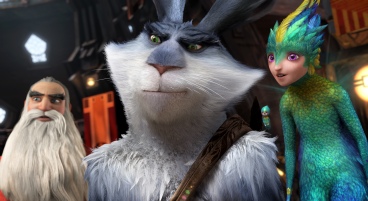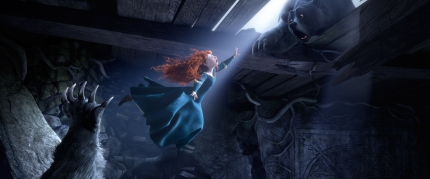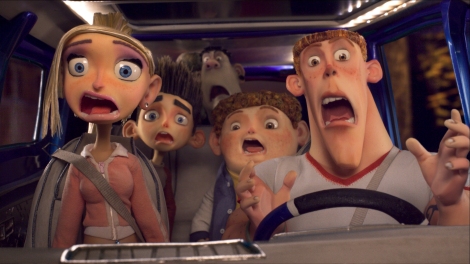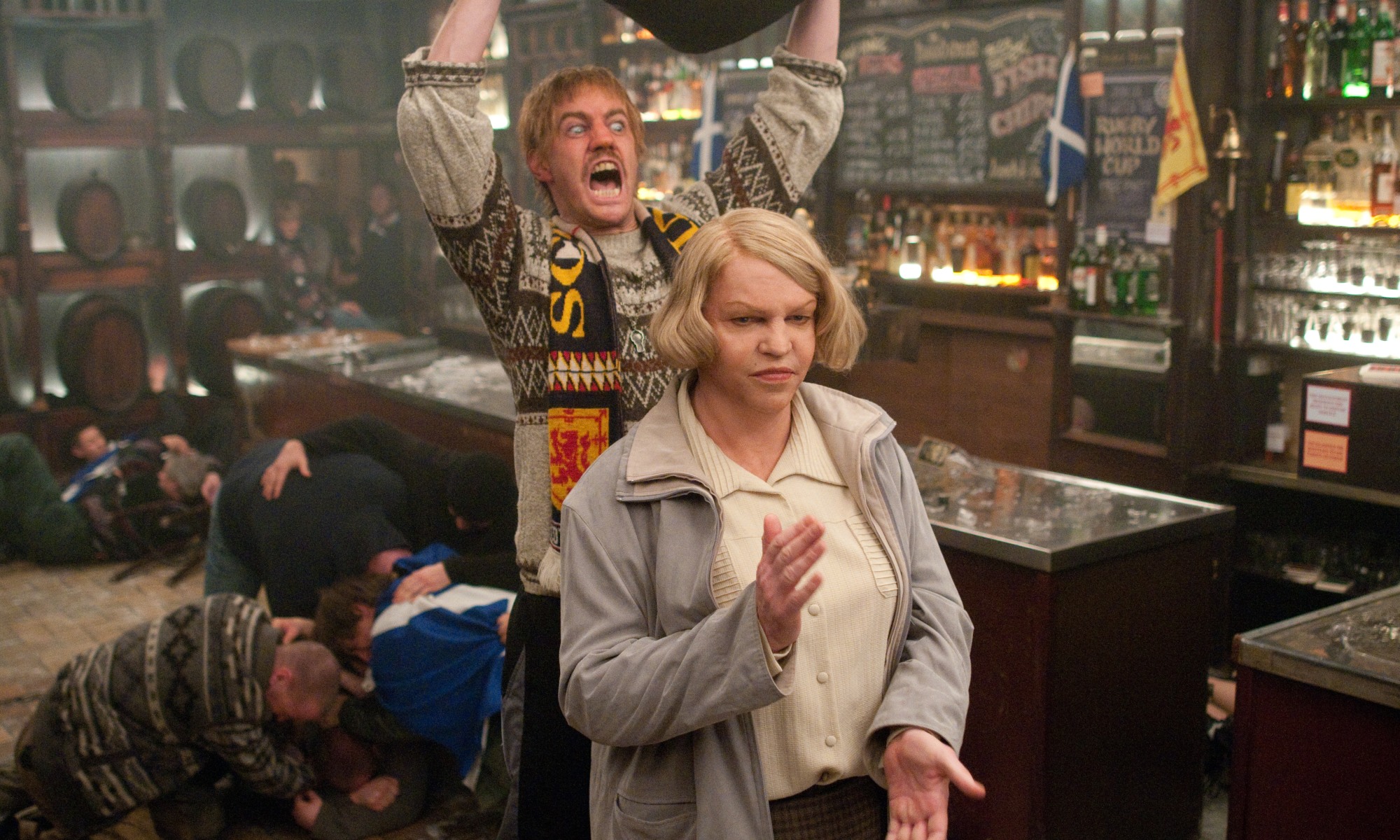Pete Hammond is Deadline’s awards columnist. This story appeared in the Nov. 28 issue of AwardsLine.
A new trend has begun to creep into a category that’s been mostly major-studio territory since its creation a decade ago. The animated-feature lineup is seeing more independent distributors finding their way into the Oscar race and enjoying real success in winning those coveted nominations.
In fact, since the animated-feature category was created in 2001, the list of winners—beginning with DreamWorks Animation’s Shrek through last year’s victor Paramount’s Rango—has been dominated by the major studios, particularly Disney/Pixar, which won four of the past five animated-feature Oscars and six overall. Last year’s Cars 2 was the first time a Pixar entry failed to make the cut, even with five nominations in the category. Even the two independent productions that have won in the category, Studio Ghibli and Hayao Miyazaki’s Spirited Away (2002) and Aardman’s Wallace & Gromit in the Curse of the Were-Rabbit (2005), were still distributed by major studios, Disney and DreamWorks Animation, respectively. So seeing indie distributors making headway in the animation race is causing big trouble for the majors and their expensive tentpole toons that desire domination.
Chief among these indie players is tiny New York distributor GKIDS, which is also the producer of the New York International Children’s Film Festival, an Oscar-qualifying event. The company scours the world for titles appropriate not only for the festival but also for distribution. Now a big part of that process is picking films that might be Oscar friendly, as well. GKIDS first received surprise Oscar recognition for its 2010 entry, The Secret of Kells,and then really hit paydirt last year by becoming the first indie distributor to land two nominations, for Chico & Rita and A Cat in Paris,over a lot of heavyweight contenders, including Steven Spielberg and Peter Jackson’s The Adventures of Tintin. This year, GKIDS leads the indie charge with four qualifying movies (From Up on Poppy Hill, The Painting, The Rabbi’s Cat, and Zarafa),and the company has already announced two more for the 2013 awards year.
Eric Beckman, founder of GKIDS and artistic director of the NYICFF told me after winning those two noms last season, “for us, our whole purpose is to help expand the market for what I find artful and thoughtful, sophisticated animated films for adults and kids. (It’s) an art form that exists with more economic success outside the U.S. than inside.” He says he doesn’t have nearly the budget of the majors but still finds a way to compete. “Our challenge is just getting the film into the hands of the Academy and getting them to put the damn thing in their DVD player. We’re an indie film company; we’re not going to spend a half-million dollars on an awards campaign. We can’t,” he explains.

Those who can, though, likely will, especially in this year’s hotly contested race. Disney finds themselves in the ticklish situation of having three genuine contenders in Pixar’s Brave, Tim Burton’s Frankenweenie,and Wreck-It Ralph possibly dividing votes and putting a burden on the studio to support all three equally. That’s something DreamWorks Animation’s Jeffrey Katzenberg is trying to avoid by putting most of his company’s Oscar strategy toward the holiday release, Rise of the Guardians, rather than the summer hit Madagascar 3: Europe’s Most Wanted,which has turned out to be the biggest film in the history of the franchise. Still it makes sense. Neither previous Madagascar got a nomination, and it’s unlikely the third film in the franchise will change the trajectory, despite being generally acknowledged as the best in the series. Last year, surprisingly, DWA got nominations for both their entries, Kung Fu Panda 2 and Puss in Boots, which likely split the vote, allowing Rango a clear path to victory. With hit toons from Universal (The Lorax), Sony (Hotel Transylvania),and Fox (Ice Age: Continental Drift),there is a strong studio presence to fight off the new wave of indie love the nominating committee seems to have.The animated field sports 21 titles that have been entered into the competition, meaning it is virtually certain there will be five nominees for only the fourth time in the history of the award. Here is a snapshot of the contenders for those five slots.
ADVENTURES IN ZAMBEZIA
From South Africa, this story about a naïve falcon who flies to bird-friendly Zambezia might remind some viewers of last year’s Rio,but with its likable protagonist and a good voice cast led by Abigail Breslin, Jeff Goldblum, and Samuel L. Jackson, it could be a sleeper.

BRAVE
This Disney/Pixar entry was a summertime hit for the studio and a welcome return to some critical enthusiasm after last year’s Cars 2 detour. It has meticulous animation but didn’t seem to generate the same level of enthusiasm as many past Pixar winners. However, artistry just might be enough here to make the grade.
DELHI SAFARI
The first Indian 3D animated film, in which a bunch of jungle animals team up to save themselves from human intervention, could remind some of the Madagascar franchise, but the Bollywood flavor sets the tone and sets the film apart. Christopher Lloyd and Jane Lynch are among the voices in the English-version indie to be released in the U.S. by Applied Art Productions.

DR. SEUSS’ THE LORAX
Another in the successful transformation of Dr. Seuss from book to animated smash, this huge spring hit with a strong pro-environment message came from Christopher Meledandri, who is turning out to be Universal’s most reliable hit maker. Critical indifference won’t help gain awards traction here, though, making its Oscar prospects a little cloudy.
FRANKENWEENIE
Tim Burton’s most personal film is adapted from a live-action short he made at the beginning of his film career and turned into a black-and-white 3D animation wonder. Boxoffice reception was chilly, but Burton might have enough aficionados on the animation committee to serve up a second nomination for him in the category after first hitting paydirt with 2006’s Corpse Bride.
FROM UP ON POPPY HILL
GKIDS distributes this Japanese entry from legendary Studio Ghibli and Oscar-winning director Hayao Miyazaki and Goro Miyazaki. The 1963-set love story centers on a young couple hellbent on saving their high-school clubhouse from destruction. Never underestimate animators’ love for the Miyazaki brand.
HEY KRISHNA
Yet another entry from India, this one is touted as India’s first fully animated stereoscopic film and is a grand epic adventure tracing the exciting journey of its title character as he battles the forces of evil. Could it be Bollywood’s year in this category?

HOTEL TRANSYLVANIA
One of several horror-themed entries, Sony Animation’s fall hit features Adam Sandler as Dracula, who operates a plush resort that caters to the monster crowd and is designed to keep humans away. Sony Animation hasn’t been in the race since Surf’s Up, but this is one of the more high-profile films on the list—though critics didn’t bite.
ICE AGE: CONTINENTAL DRIFT
The fourth film in the wildly successful series from Blue Sky and Fox was a cash cow for the studio, but generally was perceived to be a by-the-numbers entry that wasn’t distinguished by any “wow” factor that would help gain it entry into the golden circle of five. A case of been there,
done that, as far as Oscars go this year.
A LIAR’S AUTOBIOGRAPHY: THE UNTRUE STORY OF MONTY PYTHON’S GRAHAM CHAPMAN
A 3D animation romp through the late, great Graham Chapman’s life as seen through the eyes of his fellow Monty Python gang. It is one of the most distinctive entries this year, and Python fans should spark to the storytelling.
MADAGASCAR 3: EUROPE’S MOST WANTED
Three is the charm, as this not only became the most successful and critically admired edition of the zoo gang’s tales but also the series’ biggest hit. Nevertheless what movie with a “3” in the title gets Oscar recognition here besides Toy Story?
THE MYSTICAL LAWS
This Japanese scifi entry envisions a world where Asia has become the Earth’s superpower, against a weakened and powerless United States. This type of action anime rarely wins nominations, and that’s unlikely to change this year.
THE PAINTING
GKIDS is qualifying the original French-language version of this beautifully animated piece from auteur Jean-Francois Laguionie. The film is almost painterly in nature and, therefore, the artiest entry of all 21 films in contention. With animated worlds inside of each painting, Laguionie creates a unique visual look. A real threat to grab an indie slot and steal a spot from a major.

PARANORMAN
From Focus and Laika, the groups responsible for past nominee Coraline, comes the tale of Norman, who fights off zombies, parents, and other distractions to save his town in this clever horror spoof that is one of the best reviewed animated films of the year. Can lightning strike twice for Laika?
THE PIRATES! BAND OF MISFITS
Aardman strikes again with the fiendishly clever and engaging pirate saga. It was not a boxoffice smash for Sony in the U.S., but its distinctly British sensibility and hip script make it one of the year’s most entertaining toons, one that could surprise pundits who might have written off its chances.
THE RABBI’S CAT
Another GKIDS product from France, this 1930s-set trifle concerns a rabbi and his talking philosopher of a cat, who gains the power of speech by dining on the family parrot. Clever, but weird. Last year, the company scored with a Sam Spade-like cat in the noir takeoff A Cat in Paris, so why not turn to the felines again?
RISE OF THE GUARDIANS
It’s The Avengers of animation, and DreamWorks can only hope to grab just part of that boxoffice. Bringing together childhood icons the Easter Bunny, Santa Claus, Tooth Fairy, Jack Frost, and Sandman to fight the evil boogieman Pitch, this is gorgeously animated stuff from William Joyce’s books. Expect DreamWorks Animation to really make a play for the gold here.
SECRET OF THE WINGS
Yet another in the direct-to-video Tinker Bell series for Disney. The company played it for a week in Hollywood to qualify, just to make sure there would be enough entries in the category to have the maximum five nominees. Disney’s money is on their other three films, not this one.
WALTER & TANDOORI’S CHRISTMAS
With a nice message and a holiday spirit, this entry from Sylvain Viau concerns the pair’s efforts to save their town from an ecological disaster just before Christmas. If Arthur Christmas couldn’t make the cut last year, don’t expect Walter Christmas to do the trick, either.

WRECK-IT RALPH
A terrifically funny and clever toon about videogame villain Ralph trying to become a good guy for a change. Great voice work from John C. Reilly and Sarah Silverman, plus a really amusing script, make this one for the hip crowd and a potential spoiler in the race for the triumphant return of the Disney Animation label.
ZARAFA
GKIDS’ Belgium-produced French boxoffice hit centers on a true story of a giraffe given as a gift to France’s King Charles X from the Pasha of Egypt. Shown in the original French-language version, this film has at least one awards consultant worried that it could charm its way into contention. A possible sleeper?


















